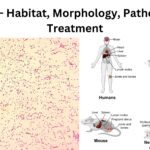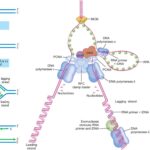AQA GCSE Biology 24 Views 1 Answers
Sourav PanLv 9November 12, 2024
How does the human body respond to the increased demand for energy during exercise?
How does the human body respond to the increased demand for energy during exercise?
Please login to save the post
Please login to submit an answer.
Sourav PanLv 9May 15, 2025
During exercise, the human body responds to increased energy demands through a series of physiological and metabolic adaptations. These adaptations ensure that sufficient energy is produced to support physical activity while maintaining homeostasis. Here are the key responses:
1. Increased Oxygen Uptake
- Respiratory Response: As exercise intensity increases, the body’s demand for oxygen rises significantly. The respiratory rate and depth of breathing increase to enhance oxygen uptake. For instance, oxygen consumption can rise from about 0.25 liters per minute at rest to approximately 5 liters per minute during maximal exercise in trained individuals.
- Cardiovascular Adaptations: The heart rate increases, and stroke volume (the amount of blood pumped per heartbeat) improves due to enhanced myocardial contractility and increased blood volume. This allows for more efficient delivery of oxygen to active muscles.
2. Energy System Activation
- Immediate Energy Sources: For short bursts of high-intensity activity (up to about 10 seconds), the body relies on the phosphagen system, which uses stored ATP and creatine phosphate.
- Glycolytic Pathway: For activities lasting from about 10 seconds to 2 minutes, anaerobic glycolysis becomes the primary source of ATP. This pathway generates energy quickly but produces lactic acid as a by-product, which can lead to muscle fatigue.
- Oxidative Pathway: For prolonged exercise (lasting longer than 3 minutes), aerobic metabolism becomes predominant. This pathway is slower but more efficient, utilizing carbohydrates and fats as fuel sources to produce ATP in the presence of oxygen.
3. Metabolic Changes
- Substrate Utilization: During exercise, the body shifts its substrate utilization from primarily carbohydrates at lower intensities to fats at moderate intensities. This shift helps conserve glycogen stores for higher intensity efforts.
- Lactate Production: As exercise intensity increases, lactate levels rise due to anaerobic metabolism. However, trained individuals can tolerate higher lactate levels and utilize lactate as a fuel source more effectively.
4. Hormonal Regulation
- Catecholamines: Exercise stimulates the release of hormones such as epinephrine and norepinephrine, which increase heart rate, enhance glycogen breakdown, and promote lipolysis (fat breakdown) for energy.
- Insulin Sensitivity: Physical activity improves insulin sensitivity, facilitating glucose uptake into cells for energy production during and after exercise.
5. Muscle Adaptations
- Hypertrophy and Endurance: Regular exercise leads to muscle adaptations such as hypertrophy (increased muscle mass) from resistance training and improved oxidative capacity from endurance training. These adaptations enhance the muscles’ ability to generate force and sustain prolonged activity.
- Increased Mitochondrial Density: Endurance training increases mitochondrial content in muscle cells, improving their capacity for aerobic ATP production from fats and carbohydrates
0
0 likes
- Share on Facebook
- Share on Twitter
- Share on LinkedIn
0 found this helpful out of 0 votes
Helpful: 0%
Helpful: 0%
Was this page helpful?




